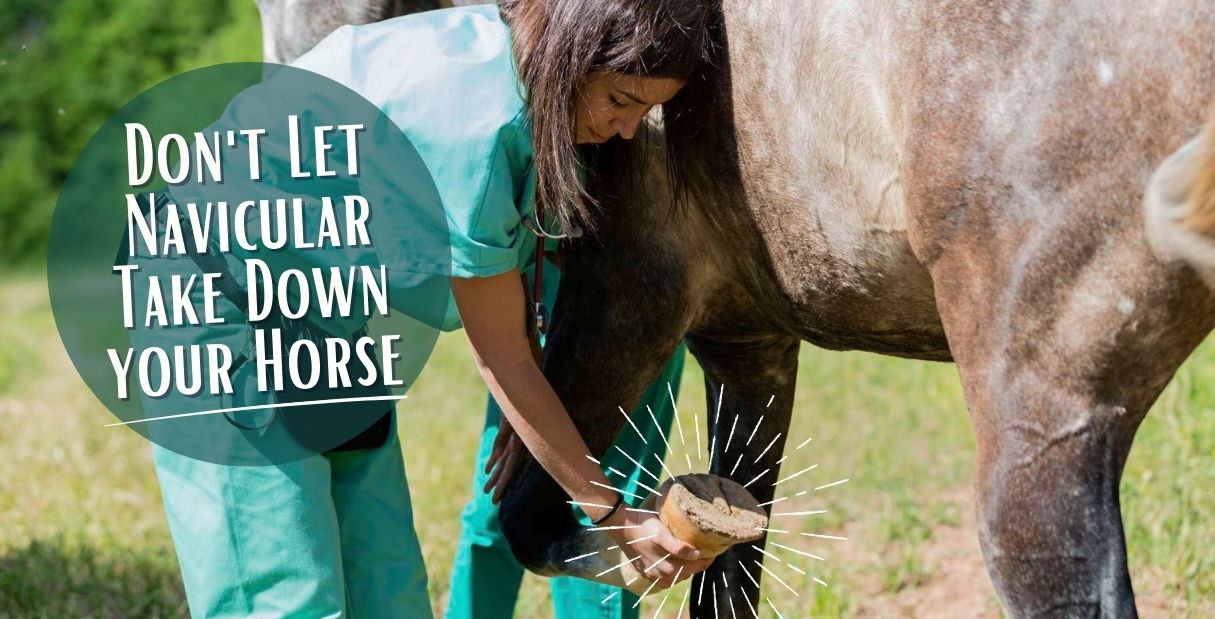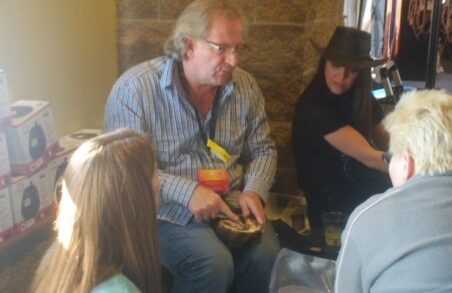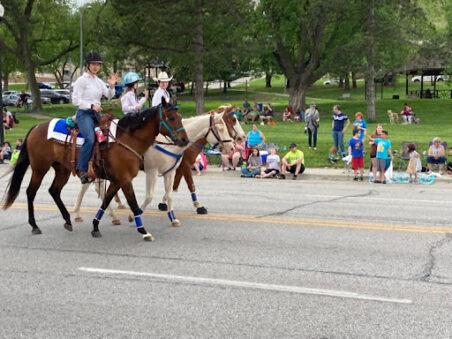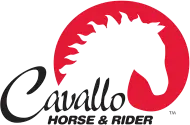Navicular Disease: The Beginning of the End?
-
May 26, 2023
-
4:52 pm

Is There Help For Horses With Navicular Disease?
Have you ever heard your veterinarian mention the phrase “Navicular Disease” when referring to your beloved horse? It feels like the end. A doom. A life-altering diagnosis. But can there be help for this common (but misunderstood) syndrome?
Navicular Disease is also sometimes referred to as Navicular Syndrome and Caudal Heel Pain. It can cause horses to limp, bob their heads, and seem to be in widespread pain because of hoof discomfort. It’s a common condition—affecting up to 10 percent of all horses. It is most common in older horses but can also occur in younger horses. Certain breeds of horses, including Thoroughbreds, Quarter Horses, and Warmbloods, may be somewhat more susceptible.
Let’s talk about what is happening inside your horse’s hooves and discover how a Navicular horse can be successfully managed. I have some helpful advice for you and I’ve gathered some inspiring stories from people who have helped their horses through a Navicular-Disease diagnosis.
What are the Early Warning Signs of Navicular Disease?
You will see subtle signs such as pinned ears, swishing tails, overall discomfort, or an inability to pick up the correct lead. Your horse seems uncomfortable, but you can’t pinpoint why. He has a peaked eyelid, becomes unwilling to stand square, starts tripping going downhill, won’t pick up his foot for the farrier, begins lifting a hoof, or frequently shifts weight.
As horse owners, we have all experienced any number of symptomatic challenges. They seem like nuisances that are easy to dismiss. The truth is, they could be warning signs. Unsure how to proceed, you may choose stall rest, increase the exercise program, change the farrier, and give painkillers and supplements. The situation abates for a time, but if you only address the symptoms, this or another indication appears again later.
What to Do if you Think you See Signs?
If you think your horse may have navicular disease, contact your veterinarian (or several veterinarians) for diagnosis and options. Veterinarians will perform a physical examination and may recommend diagnostic tests, such as radiographs or ultrasounds.
What anatomy is Affected if a Horse has Navicular?
 The navicular bone is a small, flattened bone that lies across the back of the coffin joint. It is attached to the pedal bone via a short, strong ligament (the Impar ligament) and to the pastern joint by ‘suspensory’ ligaments. The navicular bone is responsible for transmitting forces from the deep digital flexor tendon to the pedal bone. When the navicular bone becomes inflamed or degenerates, it can cause pain and lameness in the horse.
The navicular bone is a small, flattened bone that lies across the back of the coffin joint. It is attached to the pedal bone via a short, strong ligament (the Impar ligament) and to the pastern joint by ‘suspensory’ ligaments. The navicular bone is responsible for transmitting forces from the deep digital flexor tendon to the pedal bone. When the navicular bone becomes inflamed or degenerates, it can cause pain and lameness in the horse.
Navicular Syndrome is often diagnosed with radiographs showing deterioration of the coffin bone. Enlarged holes, jagged edges and passageways through the bone are assumed to be a result of the disease. This does not cause pain, but the porous, rough edges can indeed irritate other more sensitive tissue such as the Navicular Bursa and Deep Digital Flexor Tendon. The reason for the holes has other far-reaching implications. A radiograph showing a weakening coffin bone is a symptom, not a cause. Current information suggests that the openings in the bone develop because of congested blood clots forcing through the bone spongiosa.

Deteriorated Coffin Bone
Lack of blood circulation throughout the hooves causes congestion in the channels above. When the bottleneck finally pushes through into the bone, the clots enlarge the passageways, causing deterioration of bone spongiosa. It’s the lack of freely flowing blood circulation which is the real cause of bone corrosion. Pain results additionally, through irritation of connective live tissue, stress on ligaments and tendons, and bruising when bone tissue meets corium.
Will my Horse Be Okay? What Are the Treatment Options?
The prognosis for navicular disease varies from horse to horse. Some horses with mild navicular disease may respond well to treatment such as rest. Your choice of treatment is either to manage the symptoms or cure the cause. There are several medications for pain, decreased inflammation and even increased blood circulation. Nerve block injections will provide comfort for a period. Of course, this treatment has its limits and side effects. Bar shoes and pads are sometimes applied. Be aware that, with a normal horseshoe the frog still makes some ground contact and the blood can still circulate there. With the extra metal of the bar shoe covering the frog area, circulation is fully limited. The horse can walk only because he cannot feel his feet. His hoof is numb, and yet the internal damage continues.
Any metal shoe is nailed on when the hoof is in the air, at its smallest, most contracted shape. The hoof is not expanded with weight-bearing or movement, and it is then held firm in this smallest state. There is no spreading out and no room for the coffin bone to properly descend. So as the coffin bone pushes down under the horse’s weight, it bruises the solar corium because the sole cannot draw flat to get out of the way. Both proper blood circulation and shock absorption are dangerously impeded.
What Can I Offer my Horse to Get Him Through?
As your horse’s primary caregiver, you know how he’s feeling and you are ever-present to help provide comfort.
Once you have a vet working for your horse, here’s what YOU can contribute to the plan:
- It can help to keep your horse’s weight at the lower end of his recommended range. Less pressure on the hooves may help reduce pain.
- Movement is your horse’s natural state. The more he moves the quicker he’ll heal.
- Make sure your horse has some soft area in his stall or home area if he needs to lie down.
- Outfit your horse with Cavallos and some Hoof Boot Pads to provide constant padding and extra hoof protection.
- Keep a journal. Keep track of how your horse is moving and feeling after the treatment options you have tried. You’ll find out what works and remember easily.
Thinking Outside the Box to Help Your Horse

Keeping your horse barefoot can encourage the blood to circulate with ease through the proper channels, carrying a host of nutrients. The hoof can flex and expand to allow shock absorption and relieve the strain to extensor tendons and lateral cartilage. Oxygen and nutrients help increase healthy new bone growth. Optimally functioning hooves will naturally show a decrease in symptoms of discomfort and facilitate healing the cause.
Rehabilitating the hoof to perform its natural function is the only way to cure the condition. The hooves will require proper trimming, hydration and adequate movement on appropriate terrain. Cavallo Hoof Boots are an integral part of the rehabilitation process, as they provide comfort, protection and traction. Cavallos have a slightly raised rim to offset the weight of a tender sole, while still maintaining an inner surface functioning as a counter effect for the expansion of the hoof while weight bearing. Cavallos will assist in encouraging blood circulation. In transition, Cavallo Gel pads can be used to further stimulate blood flow. If more cushion is required, you have the option of inserting Comfort Pads. And if your horse is very tender and benefits from wearing boots all day, every day you may wish to use Cavallo Pastern Wraps or Sleeves
Have Horses Made it through this Diagnosis and Thrived?
Over time, horse owners have sent their success stories to us –detailing what they have done to help their horses with a Navicular Disease or Syndrome diagnosis. Here are some stories from real horse owners to help provide hope:
"The Boots are Life-Changing..."

Rider Kelly Barbato reports, “The boots are life-changing. My mare was diagnosed with pretty bad Navicular on her front right. With big diet changes, awesome trimming, and finding these boots, this makes it possible to keep riding. We do long trail riding on weekends; we camp with our horses. Lady was diagnosed with navicular a year and a half ago, and your boots have kept her on the trail! Over 30 miles on our last trip! So, thank you for what you’ve given us! Lady is a Paint and is 22 years young, ridden by my mom, 71, who just started riding 4 years ago. She loves long trail rides. Fifteen miles is her favourite distance.”
"Walked Like he Was On Stilts..."
Linda Thielen Tatro wrote, “My navicular boy walked like he was on stilts and was very ouchie on rocks. I bought him Cavallo Trek boots and put your pads in them and he walks out stretching out in total comfort and he loves them. Best investment I ever made. I’ll get many more years of riding with him. Thank you.”
"He Painfully Limps on Pavement..."
 Mary Sutherland sent in a photo of her horses riding in a parade. “On the far end is my son in his first parade with our 26-year-old gelding,” she says. “The horse has long toes and short heels, coffin joint arthritis, and early Navicular changes, and painfully limps on concrete— but today, he stepped right out the whole way in his ELBs with pads! Thank you so much!”
Mary Sutherland sent in a photo of her horses riding in a parade. “On the far end is my son in his first parade with our 26-year-old gelding,” she says. “The horse has long toes and short heels, coffin joint arthritis, and early Navicular changes, and painfully limps on concrete— but today, he stepped right out the whole way in his ELBs with pads! Thank you so much!”
"She Was Prancing Home like a Machine!"
 Christine Kasowski Cernetisch says, “I want to share my day—because no doubt, without my Cavallos, I’d not have gone more than a mile or two. I’m in South Dakota, and we had massive snow and ice, but now it’s mud and slop, and the fields are so drifted it’s either muddy or rocky. Oh, and the mare is also diagnosed with Navicular. But 10 miles later, she was prancing home like a machine! I love our boots with ice tips! Mud, muck, slop, and drifts, and they didn’t budge!”
Christine Kasowski Cernetisch says, “I want to share my day—because no doubt, without my Cavallos, I’d not have gone more than a mile or two. I’m in South Dakota, and we had massive snow and ice, but now it’s mud and slop, and the fields are so drifted it’s either muddy or rocky. Oh, and the mare is also diagnosed with Navicular. But 10 miles later, she was prancing home like a machine! I love our boots with ice tips! Mud, muck, slop, and drifts, and they didn’t budge!”
"Saved her Life..."
Renee Dewey-Layman shares that she believes Cavallo Boots saved a horse’s life. “I took on a lovely Appy mare slated for either auction or euthanasia because of chronic lameness. My farrier connected us, and I took her. With corrective trims and Cavallo Trek Boots, her all-four lameness has been reduced to just the right front. Radiographs show early navicular changes. Shoeing her would require a concurrent vet visit as she would need true sedation, not just oral Dormosedan. She has experienced so much discomfort that nailing a shoe would result in someone getting hurt. I thank my farrier, Lemonia Fotinos, too! She recommended and uses Cavallo Boots and was instrumental in this mare seeing a much brighter future. Even if she is never sound for riding, she will spend the rest of her days here with me. She’s only 14ish! She does so well with her boots! What is the long and short of the story? Cavallo Boots saved her life.”
"110% Sound for Almost Two Years Now!"

Finally, Lena Hylton shares, “Cavallo helped my extremely sole-sensitive 20-year-old Paint gelding who also had a touch of Navicular. He has been barefoot and 110 percent sound for almost two years now! I love my Cavallo Boots and they have travelled hundreds of miles on trails with him. He loves them, too. He lifts up his hooves to have them put on! Thank you, Cavallo!”
Know your Horse, Know your Mind
With proper care and management, most horses with navicular disease can live a full and active life. Understanding the implications of the personal choice you make in the treatment of any diagnosis is your responsibility as a horse owner. You also can choose to accept or reject a prognosis, seek another opinion, and do your own research. The important thing is the quality of life your horse enjoys. Soundness is living a pain-free life.
Wishing you many happy trails,
-Carole Herder

